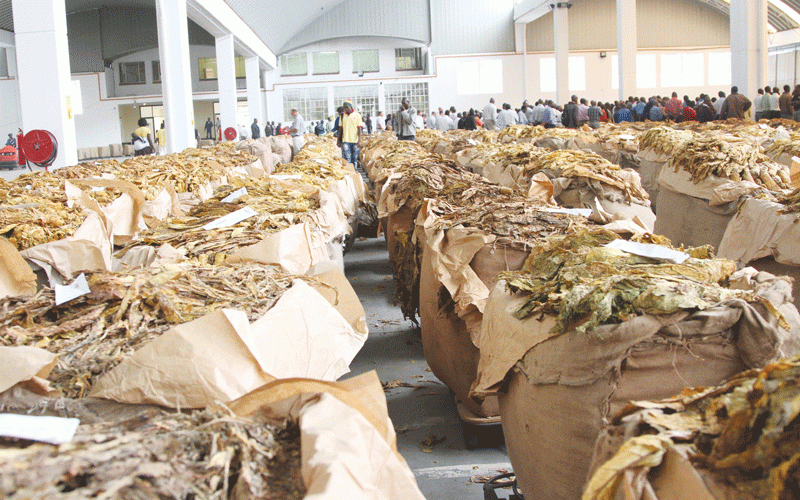
TOBACCO revenue reached US$258 million on day 29 of the 2023 selling season, translating to a 19% surge from the comparable period in 2022.
Tobacco is one of Zimbabwe’s foreign currency earners. It contributed about US$782 million in the 2020 farming season, according to the Tobacco Industry and Marketing Board.
Zimbabwe is one of the largest producers of the golden leaf in Africa and the world’s fourth largest producer after China, Brazil and the United States. Yet, the future of tobacco growers — mostly small-scale farmers — remains gloomy.
Lands, Agriculture, Fisheries, Water and Rural Resettlement permanent secretary John Basera recently told NewsDay Business that the direct response from the tobacco value chain transformation strategy positively impacted the revenue growth.
“Income/revenue to farmers increased by 19% from US$216 million to US$258 million this year, owing to the tobacco value chain transformation strategy which is currently in motion and this is likely to increase the country’s chances of achieving the objectives of V30,” he said.
“Tobacco output grew marginally by 1% from 211 100 219 kilogrammes (kg) produced during the 2020/21 production season to 212 711 370kg in the 2021/22 season.”
According to the crop, livestock and fisheries assessment report for the 2022/23 summer season, tobacco production is expected to increase by 9% from 212 703 tonnes.
As of April 21, 2023, total deliveries were up by 18% to 86,14 million kg compared to 72,21 million kg in the same period last year, while the average price firmed slightly by 1% from US$2,97 per kg in 2022 to US$3/kg in the same period this year.
- TIMB boss in court
- Tobacco sales hit 208m kg mark
- Tobacco sales rake in US$650,3 million
- Payment delays threaten tobacco farming preps
Keep Reading
Statistics from the Zimbabwe Agricultural Transformation Agenda Going4Growth report released in March show that export earnings stood at US$991 million in 2022. This was up from US$820 million in 2021 and US$764 million in 2020.
Tobacco is on a rebound in Zimbabwe after production plummeted from a high of about 240 million kg in 1998, according to government figures, to less than 50 million kg a decade later.
This was after the eviction of thousands of white farmers who accounted for most of the tobacco production.
Zimbabwe has, however, since then rapidly increased production to 261 million kg in 2019.
China has been integral to Zimbabwe’s tobacco boom by establishing a grower contract system run by the State-owned China National Tobacco Corporation, the world’s biggest cigarette producer.
Under the system, the Chinese firm loans seeds, fertiliser, food and money for labour and wood to black farmers who now make up the majority of Zimbabwe's tobacco producers. The farmers, in turn, are obligated to sell their crop to the Chinese firm or its agents.
About 95% of Zimbabwe’s crop is financed through the contract system, say officials.
However, there have been calls for the regulator to deal with unscrupulous tobacco merchants, contractors and middlemen who shortcircuit the contract farming process to fleece farmers and contracting companies.
A number of farmers in Karoi were last year arrested and had their assets attached when they failed to own up to their contractual obligations after they side-marketed their produce.
During the 2023 tobacco selling season, growers are expected to be paid 85% of their earnings in foreign currency and the remainder in local currency.
Tobacco is the second major foreign currency earner and last year it contributed more than US$1 billion to foreign receipts.
- Follow Freeman on Twitter @freemanmakopa






